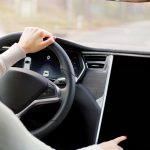European drivers keeping an eye on automated vehicle technology may need patience before Tesla’s Full Self-Driving (Supervised) arrives on their roads. The Dutch vehicle authority, RDW, which serves as a key European regulator, has issued a fresh statement on the timeline and requirements for Tesla’s much-anticipated advanced driver assistance system. Public interest and debate surrounding Tesla Autopilot and FSD has been robust in recent years as the company attempts to bring new software features from the United States to the European market. Stakeholders from both the automotive industry and consumer safety advocates continue to monitor regulatory decisions, which play a decisive role in shaping the adoption of automation across the region.
Reports from earlier years indicated that Tesla faced significant hurdles in introducing FSD features across Europe. Regulatory bottlenecks such as differing requirements between member states and EU-level safety protocols meant Tesla Autopilot’s autonomous functions became available much later than in the U.S. Anticipation around the potential EU rollout of Full Self-Driving (Supervised) began building after regulatory shifts in late 2023. Since then, timelines have remained uncertain and public communication about approval milestones has become a point of contention among both supporters and critics. Compared to previous updates, the current RDW approach underlines stricter conditions and clearer public messaging about the process, reinforcing its stance on prioritizing road safety above public enthusiasm or commercial pressure.
Why Does RDW Point to February 2026 for Tesla’s FSD?
The Dutch RDW’s latest announcement confirms that February 2026 stands as a planned window for Tesla to present its Full Self-Driving (Supervised) system for official compliance assessment. However, the authority stresses that this is only a tentative goal. Delays remain possible if Tesla fails to meet the necessary regulatory and safety benchmarks required for approval across EU markets. As with previous regulatory moves regarding advanced driver-assistance systems, RDW’s timeline centers on satisfying European standards and not marketing objectives or outside pressure.
What Role Does Public Input Play in the Approval Process?
Public communication around this process heightened after Tesla encouraged its drivers to contact the RDW in support of the FSD approval plan. RDW acknowledged the outreach but emphasized that such actions would not sway regulatory evaluations nor affect the timeline. The agency clarified,
“We thank everyone who has already done so, and would like to ask everyone not to contact us about this.”
RDW added that these messages place unnecessary burdens on its customer service teams and reaffirmed that only technical and safety criteria would dictate the schedule.
How Could FSD Enter the European Market?
Tesla’s path to approval for Full Self-Driving (Supervised) in Europe is mapped out through EU Regulation 2018/858, which provides a framework for new and unregulated vehicle technologies. Manufacturers can seek an exemption if a specific feature, like FSD, is not yet addressed by existing rules. The Netherlands, as Tesla’s point of contact, would need to submit a formal request to the European Commission requesting exemption consideration. RDW explained,
“Whether Tesla can satisfy those conditions within the timeline remains to be seen.”
First, however, Tesla must accomplish complete type-approval and local testing to prove compliance before any exemption moves forward for a committee vote among EU member states.
Tesla’s experience with regulatory approval in Europe has often involved meeting more rigorous standards than those in its original U.S. deployments. While progress toward regulatory acceptance is ongoing, previous communication strategies—such as rallying public support—have not substantially impacted technical or safety evaluations. For both industry observers and potential users, keeping informed about the multifaceted regulatory process is crucial. Navigating this process requires more than technological readiness: manufacturers must also address evolving regulatory expectations, country-specific rules, and EU-level harmonization. Those interested in the uptake of automated vehicle systems should monitor developments from both regulators and manufacturers for indicators about safety benchmarks, legal requirements, and realistic market timelines.









